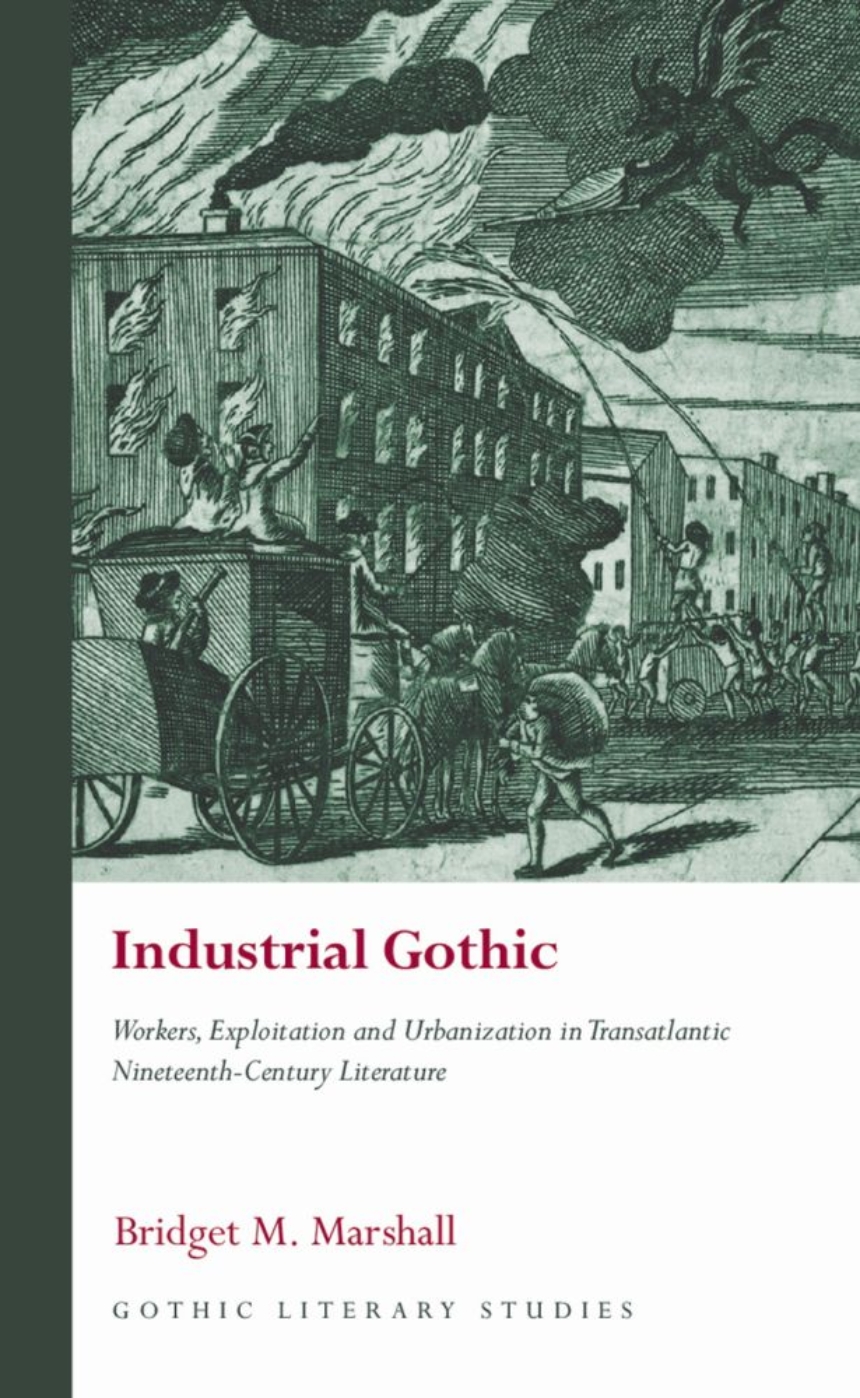Industrial Gothic
Workers, Exploitation and Urbanization in Transatlantic Nineteenth-Century Literature
9781786837707
Distributed for University of Wales Press
Industrial Gothic
Workers, Exploitation and Urbanization in Transatlantic Nineteenth-Century Literature
An archival literary study positing the Industrial Revolution as a site of Gothic excess and horror.
Stories about the real horrors of factory life frequently employed the mode of the Gothic, while nineteenth-century Gothic literature began to use new settings—factories, mills, and industrial cities—as backdrops for the horrors that once populated Gothic castles. This study carves out the “Industrial Gothic” as a new area of study that places the literature of the Industrial Revolution in dialogue with the Gothic. The book explores a significant subset of transatlantic nineteenth-century literature that employs the tropes, themes, and rhetoric of the Gothic to portray the real-life horrors of factory life. Using archival materials, Bridget M. Marshall frames the Industrial Revolution as a site of Gothic excess and horror.
Stories about the real horrors of factory life frequently employed the mode of the Gothic, while nineteenth-century Gothic literature began to use new settings—factories, mills, and industrial cities—as backdrops for the horrors that once populated Gothic castles. This study carves out the “Industrial Gothic” as a new area of study that places the literature of the Industrial Revolution in dialogue with the Gothic. The book explores a significant subset of transatlantic nineteenth-century literature that employs the tropes, themes, and rhetoric of the Gothic to portray the real-life horrors of factory life. Using archival materials, Bridget M. Marshall frames the Industrial Revolution as a site of Gothic excess and horror.
288 pages | 9 halftones | 5 1/2 x 8 1/2 | © 2021
Literature and Literary Criticism: General Criticism and Critical Theory
Reviews
Table of Contents
List of Illustrations
Acknowledgements
Introduction: Weaving a Transatlantic Gothic Industrial History
Chapter 1: The Industrial Gothic Novel
Chapter 2: Industrializing the Gothic Victim/Heroine: Mill Girls and Factory Girls
Chapter 3: The Carceral Gothic and the Cotton Industrial Complex
Chapter 4: Old and New Industrial Horrors: Monsters and Disabled Bodies
Chapter 5: The Industrial Environment: EcoGothic Horrors
Epilogue: Unravelling the Industrial Gothic
Acknowledgements
Introduction: Weaving a Transatlantic Gothic Industrial History
Chapter 1: The Industrial Gothic Novel
Chapter 2: Industrializing the Gothic Victim/Heroine: Mill Girls and Factory Girls
Chapter 3: The Carceral Gothic and the Cotton Industrial Complex
Chapter 4: Old and New Industrial Horrors: Monsters and Disabled Bodies
Chapter 5: The Industrial Environment: EcoGothic Horrors
Epilogue: Unravelling the Industrial Gothic

